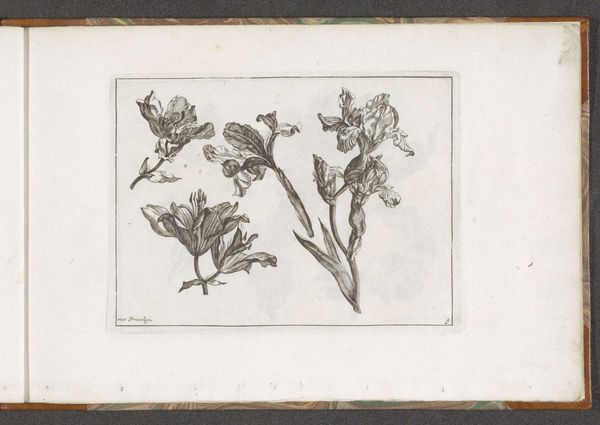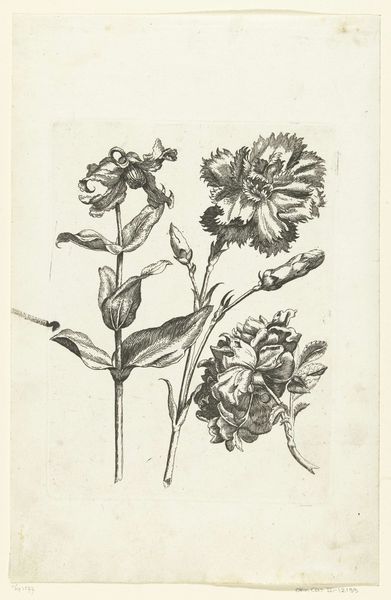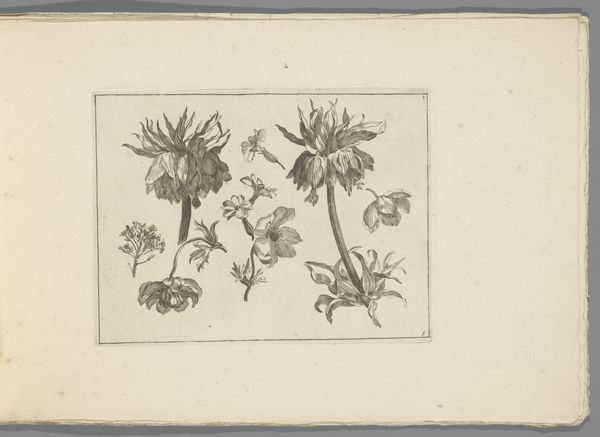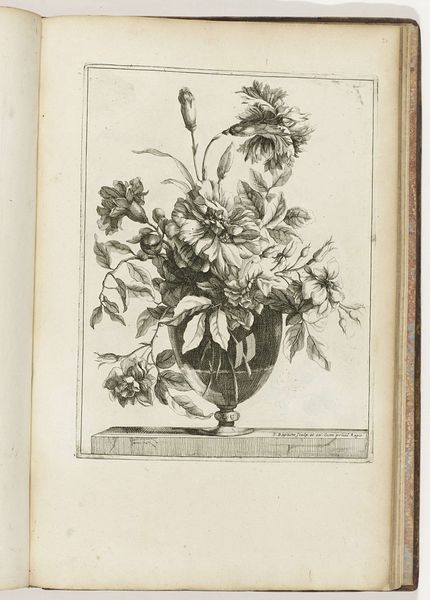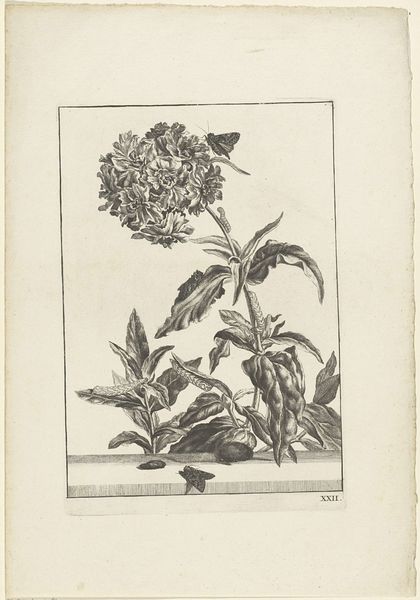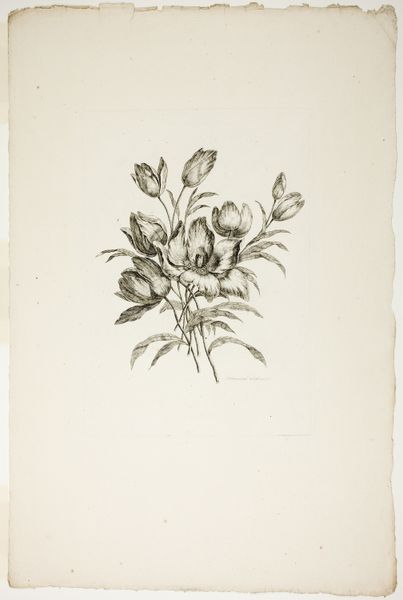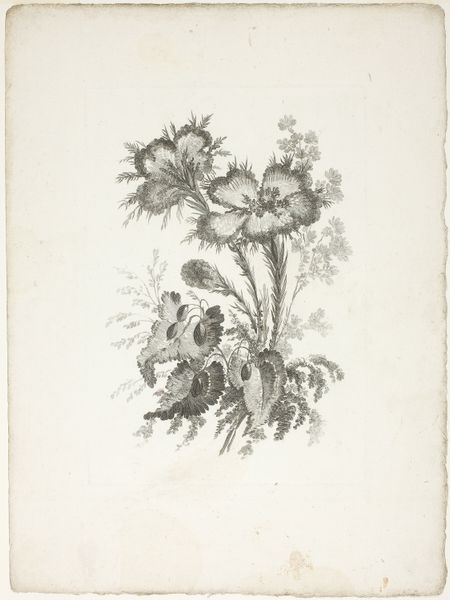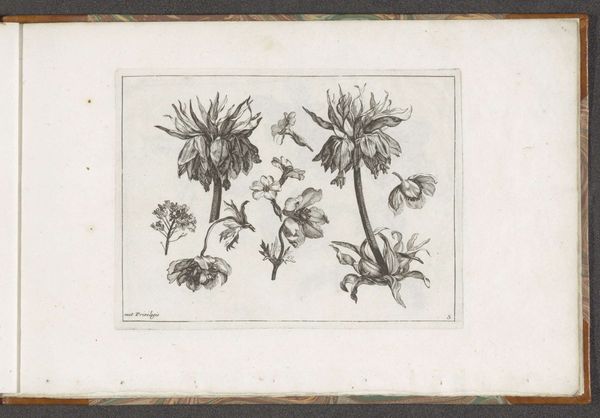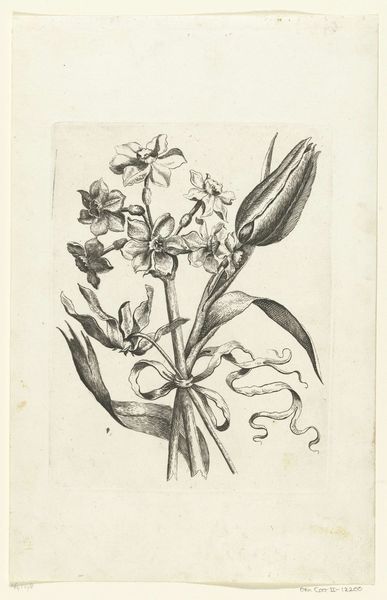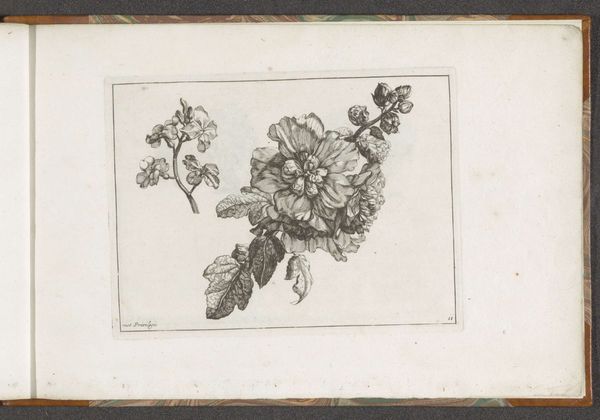
#
toned paper
#
light pencil work
#
pen sketch
#
pencil sketch
#
personal sketchbook
#
pen-ink sketch
#
sketchbook drawing
#
watercolour illustration
#
sketchbook art
#
watercolor
Dimensions: height 227 mm, width 175 mm
Copyright: Rijks Museum: Open Domain
Curator: Looking at this drawing, I'm struck by its ephemeral quality, like a memory gently sketched onto paper. Editor: Indeed. What we're looking at here is a drawing titled "Gebonden Boeket," or "Bound Bouquet," created by Jean-Baptiste Monnoyer around 1680-1695. It's currently housed in the Rijksmuseum. Monnoyer was known for his floral paintings, and this piece gives us a glimpse into his process, likely from one of his sketchbooks. Curator: The use of light pencil work, almost like a whisper, and then strengthened with darker pen strokes makes it so dynamic. There is a real tension here: between capturing fleeting beauty and the conventions around documenting it. Bouquets, of course, are deeply embedded in our culture as symbols, typically loaded with meaning around femininity and transient beauty. Editor: Precisely. We have to remember the cultural context. During this period, botanical illustration served scientific purposes, classifying and documenting the natural world. But, also flower painting and drawings spoke to the burgeoning bourgeoisie displaying taste and their acquired knowledge of horticulture, power structures influencing artistic trends of course. It’s not accidental this drawing resides in a bound sketchbook, personal space and, as a result, informal experimentation. Curator: Absolutely. It begs the question: Who was this bouquet for? Was it simply an exercise in technique, or perhaps a study for a larger, more formal painting intended for display within privileged social settings? What were the politics behind his choice of flowers? And the subtle ribbon, hinting at even deeper layers of signification! Editor: Those are key questions. It’s easy to view floral works as merely decorative, failing to recognize how they both reflected and perpetuated complex social values. We see artists walking the line between personal study and appealing to patron needs. It shows the important role institutions play in canonizing works based on a certain lens of socio-economic forces. Curator: Thanks to Monnoyer's sketchbook approach, this drawing acts as a conduit, letting us observe a pivotal moment. Editor: A crucial reminder that seemingly straightforward subjects can offer profound insights into the cultural values of their time.
Comments
No comments
Be the first to comment and join the conversation on the ultimate creative platform.




